《1. Introduction》
1. Introduction
By the end of 2015, the total high-speed railway route length in China exceeded 19 000 km, ranking first in the world. The “four north‒south and four west‒east” high-speed railway corridors have been preliminarily completed, with an express railway network built up along with other railways, covering most cities and most of the population and playing an important role in transportation. For the operation of such a gigantic railway network, the maintenance of high-speed railway equipment has become a key issue for operation companies to address. The Major railway technical policies [1] published in 2013 has explicitly proposed to “explore the status changing rules of equipment and facilities, improve the inspection and repair system, develop scientific inspection and repair standard, and intensify control over the maintenance quality.” Improvements in operation management and maintenance and repair technology are extremely significant for the continuous and safe operation of the high-speed railway.
A ballastless track structure is mainly used for high-speed railways with a design speed of 300 km•h–1 and above in China. High-speed railways require a track structure with high reliability, high stability, and high regularity. Therefore, the requirements regarding foundation settlement and especially differential settlement are very strict. In order to save land, control settlement, cross rivers, and cross the existing transportation network, viaducts are widely used for high-speed railways in China; in fact, they account for a large proportion of the total length of the railway line (e.g., more than 80% of the Beijing‒Shanghai and Shanghai‒Hangzhou high-speed railways). The post-construction settlement (the final settlement after laying) of ballastless track bridge piers is extremely strict. Settlement of a pier is not allowed to be greater than 20 mm, and the differential settlement of adjacent piers must be less than 5 mm [2]. The question of how to control and maintain settlement is not only a difficult issue during survey, design, and construction, but also a great challenge confronting the operation and maintenance department.
《2. The influence of differential settlement on high-speed railway infrastructure》
2. The influence of differential settlement on high-speed railway infrastructure
《2.1. The influence of groundwater change on high-speed railway foundation settlement》
2.1. The influence of groundwater change on high-speed railway foundation settlement
High-speed railways pass through a variety of complex environmental and natural conditions such as weather, geology, hydrology, and so forth. Most high-speed railways currently in operation have shown good performance, but local settlement that exceeds limits also exists. For example, North China has a settlement area due to a dramatic change of groundwater level. In this area, the differential settlement of piers with a continuous beam and adjacent piers with a simply supported beam varies up to 54.6 mm. The total settlement was as high as 243.5 mm (as shown in Fig. 1), with a settlement rate of 21.1–117 mm per year.
Local and seasonal changes in groundwater level can also cause both positive and negative deformation of the piled foundation of bridges. Fig. 2 shows the relationship between the settlement of bridge piers and changes in groundwater level in Southwest China. According to the observed data, bridge piers were found to rise during the rainy season and sink during the dry season. The amplitude of groundwater level change can be up to 20 m, and the settlement and rising of the bridge pier were 19.0 mm and 38.6 mm, respectively.
Local settlement can cause rapid and severe settlement of the high-speed railway subgrade, which can significantly influence the construction and operation of the high-speed railway.
《Fig. 1》
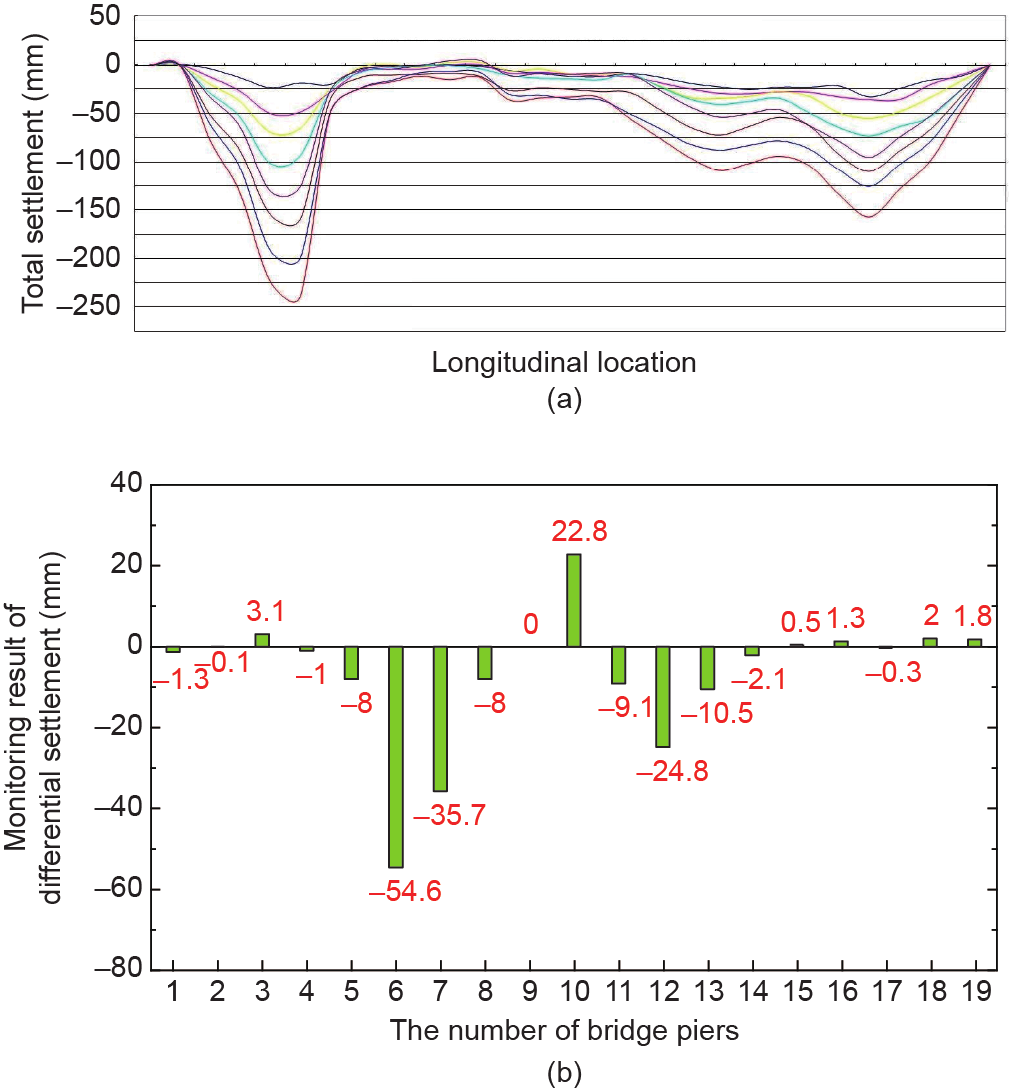
Fig.1 Subsidence curve and differential settlement. (a) Total settlement distribution; (b) differential settlement distribution.
2.1.1. The influence of groundwater level changes on the differential settlement of bridge pile foundation
Research shows that groundwater level decline is the direct cause of local settlement [3–7]. When studying engineering settlement control of a high-speed railway in an area with local settlement, the conventional practice is to focus on the relationship between groundwater change and land subsidence, and then analyze the influence of land subsidence on the project according to the engineering control standard. The countermeasures that are mainly used involve shutting wells and controlling the usage of groundwater within a certain range on both sides of the high-speed railway [8–9]. Further studies have shown that the groundwater level, stratum characteristics, and pile foundation parameters are the three most important factors affecting the differential settlement of a foundation [10–13].
A decline of the groundwater level can decrease the hydrostatic pressure in the foundation soil. Under this constant total stress, the effective stress of the soil will increase, causing consolidation and settlement of the soil. The permeability coefficient, K, is one of the key factors affecting settlement of the foundation, and can represent the characteristics of different strata. The infiltration curve is more moderate with a greater permeability coefficient. For the same decline of groundwater level, the radius of influence, R, increases gradually with the increase of the permeability coefficient. Fig. 3 shows the relationship between groundwater level decline and the influence radius with different permeability coefficients (clay to sand).
The location of the groundwater level also has a great influence on bridge pile foundation settlement. A bridge pile foundation in Northern China in the funnel settlement area can be taken as an example. Here, the bearing layer is silty clay and the pile has a length of 45 m and a diameter of 1 m. When the groundwater level is below the bottom of the pile (outside the scope of the pile foundation), the homogeneous layered substratum can generate additional stress more uniformly, and has less influence on the pile area. When the groundwater level is located within the scope of the pile foundation (16 m below the top of the pile), the pile foundation differential settlement is predicted to develop as shown in Fig. 4, which shows that 1 m of groundwater level difference may cause differential settlement up to 7.8 mm.
In addition, the length and diameter of the pile and the soil properties have a great influence on the settlement of bridge pile foundation.
2.1.2. The influence of groundwater change on the differential settlement of high-speed railway subgrade pile foundation
Local groundwater level decline caused by the pumping of groundwater is the most important cause of settlement for the pile foundation subgrade of the high-speed railway. Water along the railway lines can be divided into three types: agricultural water, industrial water, and water for life. Agricultural water mainly comes from shallow groundwater, while water for life and industrial water mainly come from deep groundwater, assuming that shallow groundwater refers to water less than 3 m below the ground surface and deep groundwater refers to water 3–100 m below the ground surface. Research has found that the pumping of shallow groundwater does not result in severe settlement of the subgrade, although it does cause severe differential settlement, which impacts the track regularity significantly, as shown in Fig. 5.
《Fig. 2》

Fig.2 Relationship between bridge pier settlement and groundwater change.
《Fig. 3》
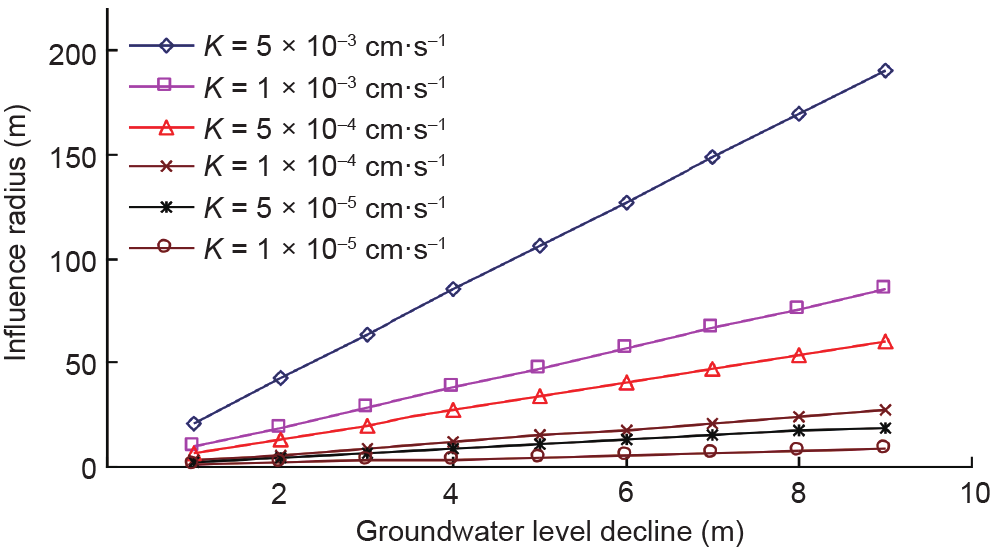
Fig.3 Relationship between groundwater level decline and influence radius.
《Fig. 4》

Fig.4 Differential settlement situations caused by different groundwater level.
The distance between the subgrade and pumping points also has a great impact on subgrade settlement. The subgrade longitudinal settlement demonstrates a "concave”shape along the railway; that is, the closer the subgrade is to the pumping point, the greater the settlement is. Fig. 6 shows the distribution of subgrade longitudinal settlement with different distances between the pumping point and the railway line. When the distance is 50 m, the subgrade settlement of the subgrade top is 8.05 mm; when the distance increases to 200 m, the subgrade settlement of the top is only 2.54 mm, 68.3% lower than the former.
《2.2. Influence of differential settlement on ballastless track regularity and additional load》
2.2. Influence of differential settlement on ballastless track regularity and additional load
Bridge pier differential settlement will result in deformation of the ballastless track, further generating long-wave vertical track irregularity. When the differential settlement is small, vertical irregularity can be adjusted by the fastener. When the settlement cannot be rectified by the fastener, other technical measures must be taken, such as vertical curve adjustment, adjustment to the track gradient, the replacement of special fasteners with a large adjustment zone, grouting to uplift the track slab, and jacking bridge bearings. (These measures have been successfully applied in high-speed railway line maintenance in Northern China.)
《Fig. 5》

Fig.5 Distribution of subgrade longitudinal settlement after exploitation of water for different purposes.
《Fig. 6》
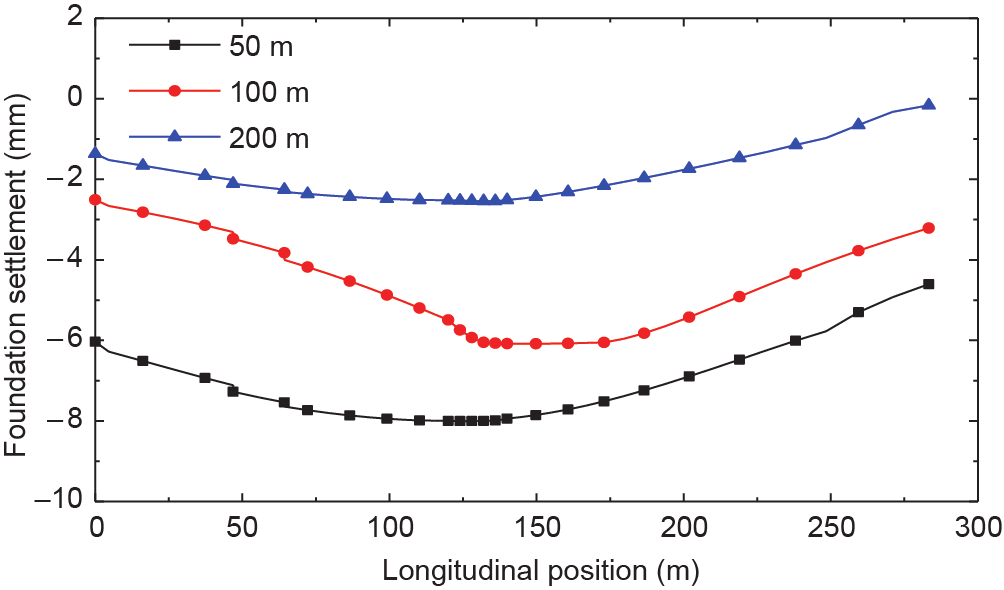
Fig.6 Distribution of subgrade longitudinal settlement with different distances between the pumping point and the railway line.
As an example, a China Railway Track System type-II (CRTS-II) ballastless track on a 32 m span simply supported box-girder bridge is longitudinally continuous on the bridge crevice. Fig. 7 shows different settlements being generated, and Fig. 8 shows the resulting vertical track irregularity changes.
The results show that, relatively speaking, vertical track irregularity changes with bridge foundation settlement, with a difference that is generally less than 1 mm. The difference is mainly composed of fastener tension-compression and the gap between the ballastless track base plate and the bridge. Permissible ballastless track long-wave vertical irregularity (1.5–120 m wavelength), as defined in the current ballastless track rules for high-speed railway line maintenance, is described as follows (where the difference between measured dynamic irregularity and static irregularity is less than 1 mm): 7 mm for Grade I, 9 mm for Grade II, 12 mm for Grade III (temporary repair standard), and 15 mm for Grade IV (speed limit standard).
The CRTS-II ballastless track is longitudinally continuous even on the bridge crevice. Bridge pier differential settlement will result in an additional load on the ballastless track. This additional load is particularly significant on a simply supported bridge. Fig. 9 shows the additional moment of the ballastless track, and Fig. 10 shows the longitudinal stress of the track slab and base plate after different settlements are generated, as was shown earlier in Fig. 7.
The results show that the additional moment of the ballastless track and the longitudinal stress of the track slab and base plate increase with increasing bridge pier settlement. The base plate tensile stress is significant on the settled bridge pier, while the track slab tensile stress on the adjacent bridge piers is much greater. A 5 mm increase in differential settlement will result in a 70 kN·m increase in the additional moment of the ballastless track, a 0.4 MPa increase in the longitudinal stress of the track slab, and a 0.7 MPa increase in the longitudinal stress of the base plate. When the differential settlement grows to 15 mm, the longitudinal stress of the base plate will reach 2.1 MPa, approaching the ultimate tensile strength of base plate concrete (C30).
《Fig. 7》

Fig.7 Differential settlement of adjacent bridge piers.
《Fig. 8》

Fig.8 Vertical track irregularities.
《Fig. 9》
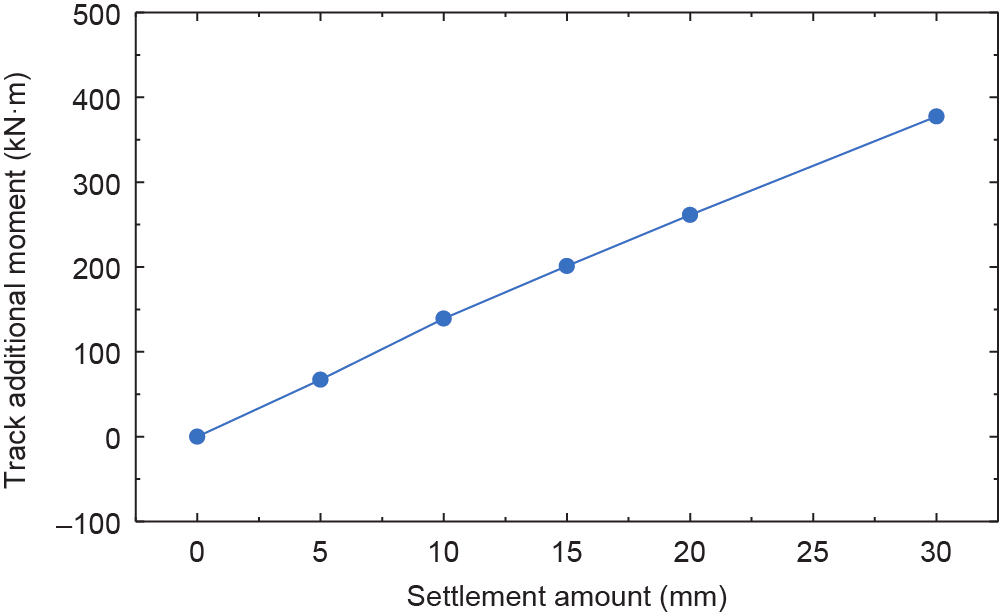
Fig.9 Growth trend of the ballastless track additional moment.
《2.3. Influence of differential settlement on vehicle and track dynamics》
2.3. Influence of differential settlement on vehicle and track dynamics
Vertical track irregularity and the gap between the longitudinal continuous ballastless track and the bridge, induced by bridge adjacent pier differential settlement, are two of the most important factors affecting high-speed vehicle running quality. The influence of these two factors is considered to be of the first priority in this paper's analysis of the dynamic influence of differential settlement. The vehicle-track-bridge coupling dynamic analysis method [17–19] was used to solve the problem described above. Vertical track irregularity (Fig. 8) was induced, superimposed with random irregularity as recommended by the Irregularity spectrum of high-speed railway ballastless track [20]. The gap between the ballastless track and the bridge was simulated by nonlinear springs.
《Fig. 10》

Fig.10 Growth trend of the longitudinal stress of the track slab and base plate. UTS: ultimate tensile strength.
Taking the CRTS-II ballastless track on a 32 m span simply supported box-girder bridge as an example, Figs. 11‒13 show how the vehicle vibration response and running safety indicators vary with differential settlement, given different differential settlement amount and vehicle speed.
The results show that differential settlement has a certain effect on vehicle vibration acceleration, vehicle Sperling value, and wheel load reduction rate under different vehicle speeds; among these findings, the effect on vehicle vibration acceleration is particularly significant. When the vehicle speed is 350 km•h–1 and the differential settlement exceeds 20 mm, the vehicle vibration acceleration reaches the specified limit requirement (1.3 m•s–2). When the vehicle speed is less than 350 km•h–1 and the differential settlement is less than 30 mm, the vehicle vibration acceleration, vehicle Sperling value, and wheel load reduction rate are all within the limit.
Under different differential settlements and vehicle speeds, the track and bridge vibration response varies with the differential settlement, as shown in Figs. 14‒16.
The results show that the impact of differential settlement on the bridge and track dynamic behavior is relatively small. When the vehicle speed is 350 km•h–1 and the differential settlement increases from 5 mm to 30 mm, the fastener reaction force on the settled pier only increases from 35.09 kN to 37.56 kN, an increase of about 7%. The rail vertical displacement only increases from 1.58 mm to 1.66 mm, the bridge vertical displacement only increases from 1.16 mm to 1.21 mm, and the increase rate is less than 5%.
《Fig. 11》
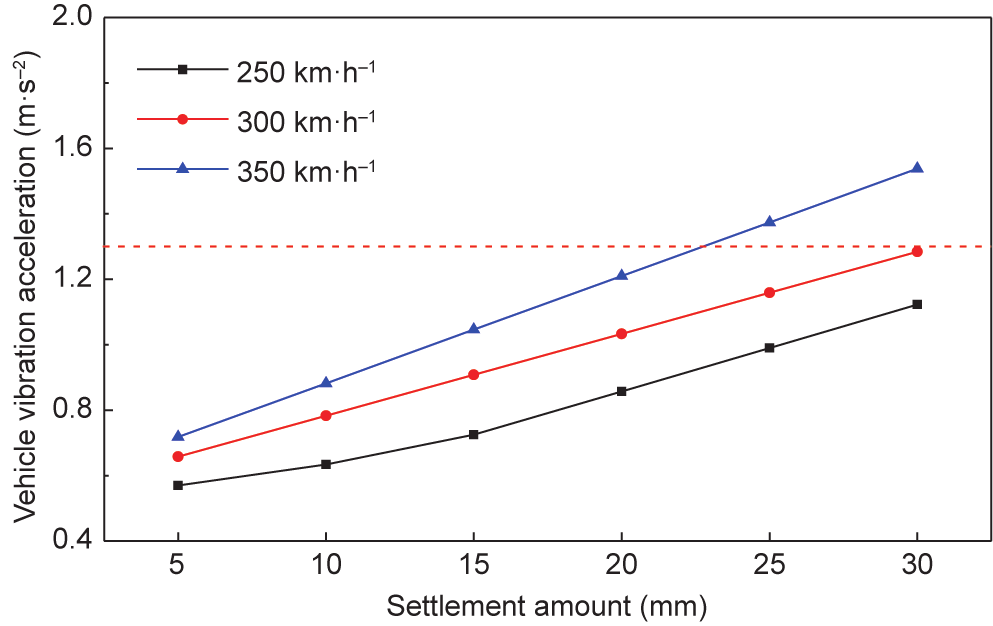
Fig.11 Relationship between vehicle vibration acceleration and differential settlement.
《Fig. 12》

Fig.12 Relationship between vehicle Sperling value and differential settlement.
《Fig. 13》
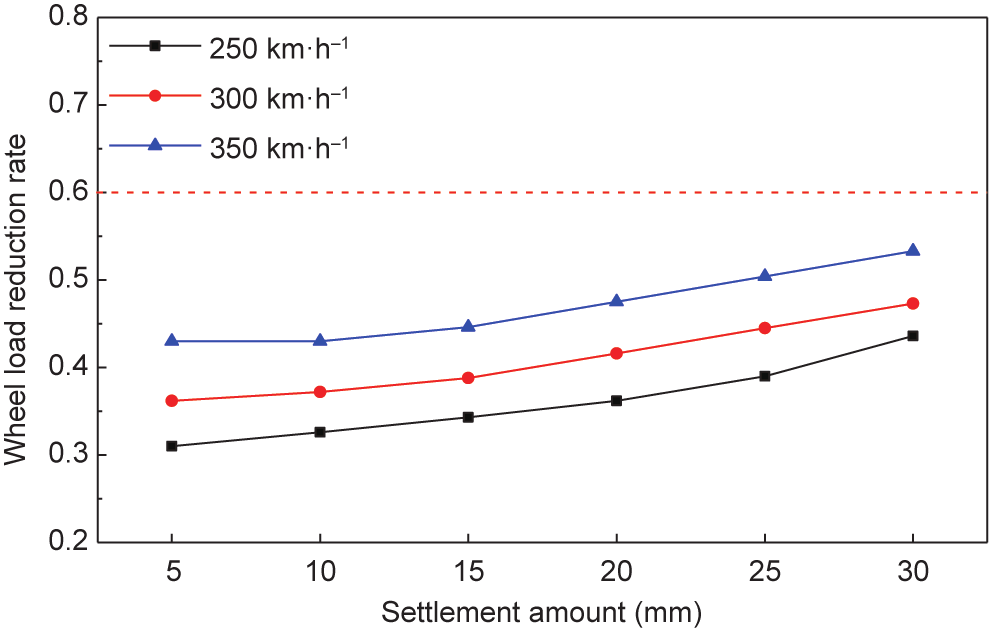
Fig.13 Relationship between wheel load reduction rate and differential settlement.
In summary, the impact of differential settlement on vehicle vibration response and running safety indicators is quite significant, while the impact on the track and bridge dynamic response is relatively small.
《3. Settlement control strategies》
3. Settlement control strategies
In this study, the cause and the influence of local settlement for high-speed railway infrastructure is presented, the following conclusions and control strategies can be drawn as follows.
《Fig. 14》
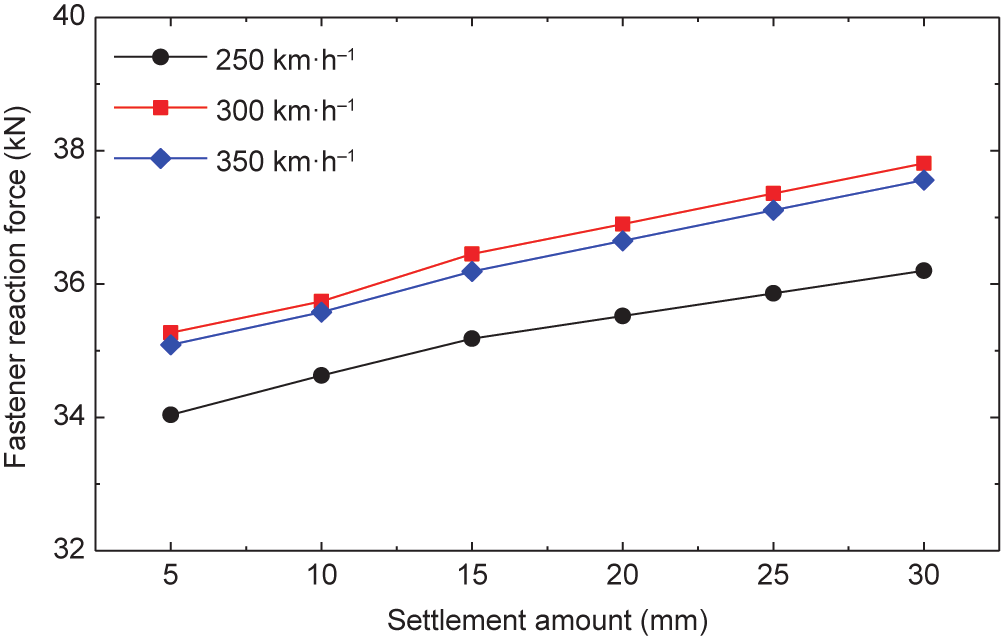
Fig.14 Relationship between fastener reaction force and differential settlement.
《Fig. 15》

Fig.15 Relationship between rail vertical displacement and differential settlement.
《Fig. 16》

Fig.16 Relationship between bridge vertical displacement and differential settlement.
(1) High-speed railway lines cross a variety of complex climatic, geological, hydrological, and other environmental and natural conditions. The influence of local settlement on high-speed railway lines becomes more and more prominent; and the overuse of groundwater is one of the main causes of local settlement. When groundwater level declines, different soils with different permeability coefficients and properties have different influences on the settlement. For sandy soil with a permeability coefficient lower than 5 × 10–3 cm•s–1, when the groundwater level drops by 5 m or by 9 m, the influence scope reaches 106 m and 191 m, respectively, and will thus directly affect the regularity of the high-speed railway. For high-speed railway pile-grid foundation, local groundwater level decline caused by groundwater pumping is the main cause of differential settlement. Therefore, during the construction and operation of high-speed railway, the exploitation of groundwater should be strictly limited within 200 m of the railway line. Legal regulations should be issued to restrict the exploitation of groundwater and water use.
(2) The differential settlement of pile foundation caused by groundwater level changes within the scope of the foundation is larger than that caused by groundwater level changes under the bottom of the pile. When the groundwater level changes by 1 m within the scope of the pile foundation, a 7.8 mm differential settlement of the pile foundation will result. The total settlement of the pile foundation subgrade caused by shallow groundwater exploitation is less than that caused by deep groundwater exploitation, while the differential settlement is more significant. Therefore, for high-speed railway lines in areas with local settlement, the pile should be lengthened appropriately in the foundation design, leaving a certain redundancy for settlement.
(3) The length and diameter of the pile and the soil properties also have a great impact on bridge foundation settlement. The pile foundation should be designed according to detailed geological survey data of the local settlement area, of adjacent regions between multi-span continuous bridges and simply supported bridges, and of areas with rugged terrain in order to alleviate the impact of differential settlement on railways.
(4) Vertical track irregularity is closely related to bridge foundation settlement. The difference is generally less than 1 mm, and is mainly caused by fastener tension-compression deformation and the gap between the ballastless track base plate and the bridge. Therefore, differential settlement of adjacent bridge piers should be controlled within 15 mm during operation in order to ensure regularity of the ballastless track.
(5) Taking the CRTS-II ballastless track on a 32 m span simply supported box-girder bridge as an example, bridge pier differential settlement results in an additional moment of the ballastless track. Base plate tensile stress is much more significant on the settled bridge pier than the unsettled bridge piers. When the differential settlement exceeds 15 mm, the longitudinal stress of the base plate will exceed the base plate concrete ultimate tensile strength. Therefore, the differential settlement of adjacent bridge piers should be controlled within 15 mm during operation in order to assure reasonable stress and durability of the ballastless track.
(6) The impact of differential settlement on vehicle vibration response and running safety indicators is quite significant, while the impact on track and bridge dynamic response is relatively small. Taking the CRTS-II ballastless track as an example, when the vehicle speed is 350 km•h–1 and the differential settlement exceeds 20 mm, the vehicle vibration acceleration reaches the specified limit. When the vehicle speed is less than 350 km•h–1 and the differential settlement is less than 30 mm, the vehicle vibration acceleration, vehicle Sperling value, and wheel load reduction rate are within the limit. Therefore, the differential settlement of the adjacent bridge pier should be controlled within 20 mm during operation in order to assure running safety and comfort for high-speed trains.
《4. Conclusions》
4. Conclusions
Groundwater level change is the main cause of local settlement. Groundwater exploitation near high-speed railway lines will directly cause differential settlement. The pile length, diameter, and other key parameters of the high-speed railway foundation must be designed to take into consideration the changing rules of the groundwater level. The differential settlement of adjacent piers will cause additional load to the track structure and vehicle, while the track and bridge dynamic response also increases simultaneously. The analysis results show that under particularly difficult conditions, a control standard for differential settlement limits should be provided according to running safety standards and reasonable running comfort standards during operation. Furthermore, a reasonable differential settlement control standard should be researched and proposed, not only to meet the requirement for vehicle running safety and track maintenance, but also to reduce the maintenance labor spent on differential settlement so as to improve the standard for differential settlement under different operation conditions.













 京公网安备 11010502051620号
京公网安备 11010502051620号




